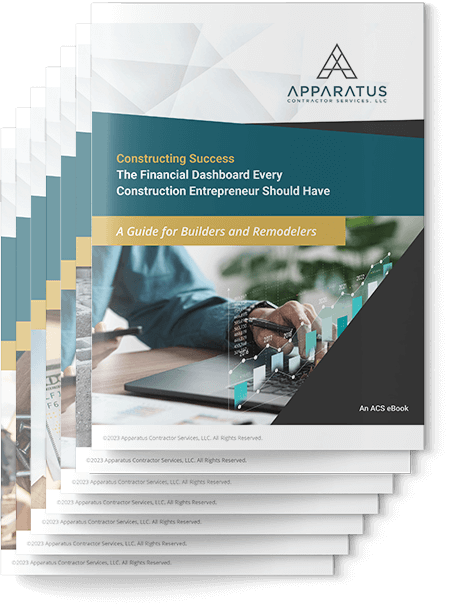Owners Draw (Owner’s Draw) An Expensive Shortcut for Contracting Businesses
If you’re like most contractors, you’ve been guilty of it at one time or another: taking an owners draw from your business checking account. It’s tempting, it’s easy, it’s your money, right?
Unfortunately, it’s also one of the worst habits you can develop as a business owner – one that will act as a barrier to your long-term success.
Owning your own company and seeing a cash deposit flow into your checking account from a completed job is really satisfying. And, it’s tempting to view all that money as profit. The truth is, it’s not.
Until supplies, labor costs, and other expenses are accounted for, positive cash flow is just an estimation. Once the profit is actually calculated, it’s often much, much less than this guess. Over time, these profits can add up, but in the meantime, taking a draw here and there can put your cash position in serious trouble.
What is an owner draw?
An owners draw is money taken for personal use from the business by the owner of the business.
So, even if we have all this money, why is it that we shouldn’t be taking an owners draw?
First, taking draws that exceed your profits gradually sets you up for confusion. It means that you are paying old bills with new funds from new work. When that cycle starts, it is very hard to break. Once that new money/old bills treadmill begins, it’s hard to get off. You have to keep bringing in new work to pay your old bills.
Said another way, the new profits from your new work are actually going to pay old expenses from completed work. That doesn’t sound good, does it!
If there is a slowdown in new work, or a slow paying customer, things can get ugly very quickly.
Second, taking draws means that you are paying yourself a “payroll” of sorts, but not putting aside funds to pay the IRS.
Think of it this way… if you were working for a large employer, each one of your paychecks would include a pay stub. This would show your employer has already taken a portion of your pay and sent it to the IRS.
If you are taking draws for your payroll, who is sending some of your money to the IRS?
Uh-oh.
At the end of year when you file your taxes, you’ll have to settle up with the IRS. This means a huge tax bill that you may not be able to pay.
This sinks a lot of contractors too – the IRS is a very persistent bill collector!
You don’t want to be one of those contractors who ends up in debt. They’re fearful and worried, with no strategy on how to get out.
Luckily, there are solutions.
First, break the draw habit today. Set yourself up on a payroll.
Here is how that works. Set yourself up within your bookkeeping system to get a routine paycheck using the funds you have, on a weekly or every other week schedule. Allow yourself an amount that will eliminate the need for you to dip back into that business account for personal reasons.
If you set up your payroll correctly, you’ll be paying the IRS the portion of your paycheck you owe them out of each check. You’ll never again have to worry about that huge bill at tax time.
Next, if you are already in trouble with the IRS, propose a workout.
The IRS will work with contractors and small business owners who recognize they have landed themselves in hot water. If you’re willing to work with them, they’ll work with you by offering repayment and tax debt forgiveness plans. Show them that you’ve fixed the problem for the future by doing proper payroll and withholding. This will increase the odds that the IRS will cut you slack and help you out of your old mistakes.
Have questions or comments about personal draws, payroll and business accounting? We’d love to hear from you!









